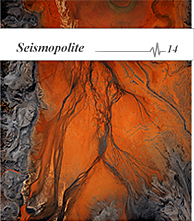June 1, 2016
Art and political ecology (I)
Which potentials can be found in art, for influencing global discourses on climate change and effecting real change? After years of widespread denial and accepted doubt, the United Nations Conference on Climate Change in Paris last year (COP21) has been called a tipping point for global consciousness about ecology and humanity’s role in climate change, confronted with – since long overwhelming – “evidence that we are no longer just theorising about an Anthropocene; but actually living in one”.[1] Indeed, this was also a tipping point for art, as COP21 saw an unprecedented number of environmentally engaged artists seeking to intervene in a climate summit. Just as remarkable was the sheer variation of strategies present, protesting and demonstrating the will to explore the “diversity of connections between the human and the non-human”,[2] going beyond modern delineations of nature. COP21 witnessed a spirit of cooperation, across artistic forms and fora that seldom coincide elsewhere, as Barnaby Drabble points out in his article in this first of two successive issues on art and political ecology. Even if many are willing to accept Beth Carruthers’ ideas, he writes, that “culture, and not science, is the field in which tools for dealing with the current ecological crisis might be fashioned – and that artists have a privileged, and even leading role in this field”; the paradox remains that this conclusion is almost never followed up and developed in practice.
This issue of Seismopolite also includes an interview with Bruno Latour about the ongoing exhibition Reset Modernity! that he curated at the ZKM in Karlsruhe, and a review by Mylène Ferrand Lointier of the same exhibition. She terms it an “experimental research platform” that lets the audience experience the idea of modernity first hand, with its perceptual coordinates and rational set of tools, and physically and intellectually experiment with the idea of a “reset”, as fellow researchers and critics. In parallel with Reset Modernity! Ferrand also comments on one of the other ongoing exhibitions at the ZKM, whose title reveals their common interest; New Sensorium, Exiting from Failures of Modernization. The latter exhibition is curated by Yuko Hasegawa (an interview with the curator will be included in Seismopolite no. 15).
Photographers interested in portraying environmental damages, often work within a difficult balance between documenting and aestheticizing such problems, Meghan Bissonnette points out in her article “Toxic sublime and the dilemma of the documentary”, where she discusses works by J Henry Fair, Edward Burtynsky, David Maisel and David T. Hanson, among others:
Over the last two decades, a group of photographers has emerged who document, through large-scale, aerial photographs, mining and oil industries, waste, pollution, and the aftermath of nuclear and environmental disasters. Their works have been labeled sublime, surreal, and even beautiful. Many of these photographers aim to raise awareness of environmental issues, but the unease and ambivalence surrounding this work calls its potential to effect change into question.
While in his article, “Seeds of Resistance. Critical Approaches to the Corporatization of Soil, Seeds, and Stone Fruit”, Steven Bridges takes three projects by Claire Pentecost, Dornith Doherty and Sam Van Aken as examples of art that resists against the ever-growing corporate control over global food production, which has disastrous effects on natural ecological systems, the concept of “toxicity” is reconsidered in Michaela Rife’s discussions of works by Jetsonorama and Will Wilson. These artists thematize the history of colonial resource extraction in the Navajo Homeland, Dinétah – examples of what she calls both “sudden devastation” and “slow violence”:
Jetsonorama’s placement of murals (...) demonstrate the hypocrisy of a tourist economy built on the celebration, bordering worship, of certain spaces while neighboring environments are destroyed at very real human and ecological expense, ironically to power Western metropolises like Phoenix, Las Vegas and Los Angeles. His work, echoing Wilson’s, reveals all of the Navajo Nation to be home, with no place for arbitrary divisions between “preserved” and “destroyed” spaces.
Last, but not least, in her article on “Wild plants”, Christel Pedersen proposes a tentative definition of a new, and steadily growing form of eco-art. This form of art that somehow bridges the gap between "activism" and "the sphere of art", seeks to be inscribed, yet simultaneously appears to refuse its inclusion in, an art-historical discourse. Rather, it is a form of art that is literally cultivated forth, seemingly in a neutral way, as an intrinsic or indigenous dissent under a hegemonic structure – and that for precisely this reason might have a subversive potential, Pedersen notes.
[1] “Contemporary Art at the Tipping Point – Environmentally Engaged Art at (and after) the COP21 Conference on Climate Change”, http://www.seismopolite.com/contemporary-art-at-the-tipping-point-environmentally-engaged-art-at-and-after-cop21-conference-on-climate-change
[2] Ibid.









